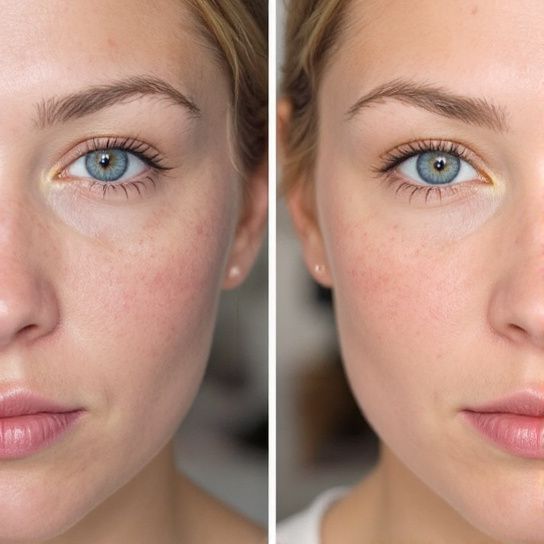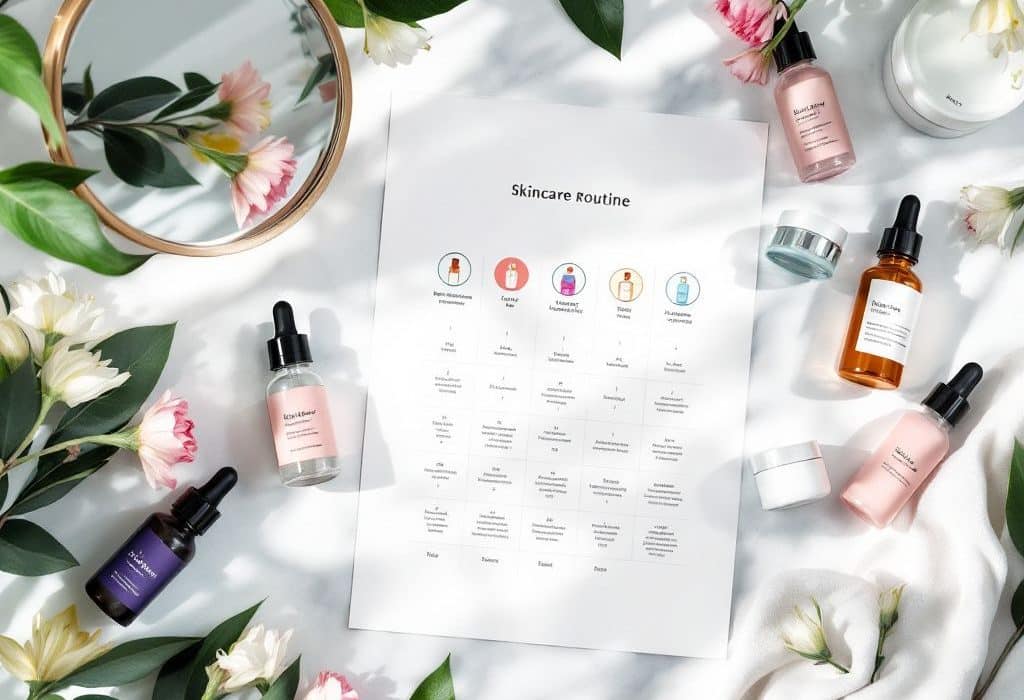As a board-certified dermatologist with a specialized focus on anti-aging, I am keen to share insights into some of the most scientifically substantiated ingredients currently at the forefront of skincare innovations. Two notable contenders in the realm of advanced anti-aging treatments are tranexamic acid and ceramides. Let’s delve into the biological mechanisms and evidence-based benefits they offer, as well as how they can be effectively integrated into skincare routines for optimal results, particularly when mastering the art of ingredient layering to achieve glowing skin and enhance the efficacy of each component.
Tranexamic Acid: Brightening Powerhouse
Mechanism and Benefits: Tranexamic acid, an amino acid derivative originally used in medicine to reduce bleeding, has gained prominence in dermatology for its remarkable ability to inhibit melanin synthesis. It functions by modulating the plasminogen/plasmin pathways in skin cells and suppressing the inflammatory mediators that exacerbate pigmentation, making it highly effective in treating melasma and hyperpigmentation.
Optimal Concentrations and Use: Concentrations in skincare formulations typically range from 2-5%, which clinical studies have shown to significantly reduce the severity of melasma over a period of approximately 8-12 weeks with daily application. Tranexamic acid is generally well-tolerated and can be applied morning and night after cleansing and before moisturizing, making it a versatile addition to any routine that prioritizes maintaining skin barrier integrity, essential for its soothing and protective roles.

Supporting Studies: A study published in the Journal of Cosmetic Dermatology demonstrated that a 3% tranexamic acid solution led to visible improvement in melasma after 12 weeks compared to a placebo. Its efficacy, coupled with a minimal irritation profile, makes it suitable for a diversity of skin types, including those prone to sensitivities.
Ceramides: The Skin’s Natural Barrier Builders
Mechanism and Benefits: Ceramides are lipid molecules found in abundance in the stratum corneum, the outermost layer of the skin. They play a critical role in maintaining skin barrier integrity, reducing transepidermal water loss, and fostering resilience against environmental irritants. With aging, levels of naturally occurring ceramides decline, contributing to dryness, sensitivity, and wrinkles. Understanding the role of ceramides in combating skin aging is crucial for selecting effective products for mature skin.
Optimal Concentrations and Use: Effective formulations often contain a combination of ceramide types (such as NP, AP, EOP) and are included in concentrations up to 1-5%. Products with ceramides are best applied post-cleansing to replenish barrier integrity, particularly after exfoliation or retinoid use, which can temporarily disrupt the barrier. This is crucial in climates where humidity significantly impacts the aging process, demanding careful selection of skin care solutions to mitigate these effects.
Supporting Studies: Clinical evidence suggests that products enriched with ceramides improve skin hydration, elasticity, and smoothness over time. A study in the British Journal of Dermatology highlighted that a ceramide-dominant emollient significantly increased the lipid content within the skin, enhancing overall barrier function and softness. For a comprehensive understanding of how lipids like ceramides work, explore the role of skin lipids in maintaining barrier strength and skin health.

Recommended Products
- Tranexamic Acid Serum: Look for products like SkinCeuticals Discoloration Defense, which combines 3% tranexamic acid with niacinamide for synergistic benefits in reducing pigmentation while soothing the skin.
- Ceramide Cream: CeraVe Moisturizing Cream is a well-formulated choice containing essential ceramides along with hyaluronic acid, known for its capacity to enhance moisture retention and fortify the skin barrier comprehensively. For more insights on hyaluronic acid, visit the benefits of hyaluronic acid for skin.
Integrating Into Your Regimen

For optimal anti-aging benefits, consider incorporating both tranexamic acid and ceramide products into a balanced routine that addresses pigmentation issues while supporting barrier health. When integrating any new active ingredient, gradual introduction along with broad-spectrum sunscreen in the daytime is crucial to protect against UV-induced exacerbation of aging signs. Additionally, understanding the function of aquaporins in cellular hydration can notably enhance the overall efficacy and results of your skincare regimen.
Conclusion
In summary, an understanding of cutting-edge ingredients like tranexamic acid and ceramides can offer transformative results when applied with evidence-based precision. By harnessing their mechanisms, concentrations, and clinical backing, patients can achieve a healthier, more youthful complexion while effectively addressing key anti-aging concerns. As always, personalized advice and consistent use underpin successful outcomes in any skincare journey. For a deeper dive into the complexities of peptides and their impact, see the comprehensive guide to peptide types in skincare.
Frequently Asked Questions
What are the key ingredients to look for in a face cream for dark spots?
When selecting a face cream for dark spots, look for ingredients such as vitamin C, niacinamide, and alpha-hydroxy acids (AHAs) like glycolic acid and lactic acid. These ingredients are known for their brightening and exfoliating properties, which can help reduce dark spots and even out skin tone. For further understanding of skin hydration, glycosaminoglycans play a crucial role in supporting these processes by maintaining adequate moisture levels.
How long does it take to see results from using a face cream for dark spots?
The time it takes to see results can vary depending on the product and individual skin. However, many users report noticeable improvements in dark spots and skin brightness within four to six weeks of consistent use. For example, the Olay Regenerist Vitamin C + Peptide 24 Face Moisturizer showed significant improvement in dark spots and brightness after four weeks.
Can face creams for dark spots cause skin irritation?
Yes, some face creams for dark spots can cause skin irritation, especially if you have sensitive skin. Ingredients like vitamin C and AHAs can sometimes irritate the skin. It is important to patch test any new product and start with a small amount to gauge your skin’s reaction.
What is the difference between serums and creams for treating dark spots?
Serums are typically more concentrated and penetrate deeper into the skin, making them effective for targeting specific skin concerns like dark spots. Creams, on the other hand, provide additional moisturization along with brightening benefits. For example, the Mother Science Molecular Hero Serum is a concentrated serum, while the Olay Regenerist Vitamin C + Peptide 24 Face Moisturizer is a moisturizing cream.
References


